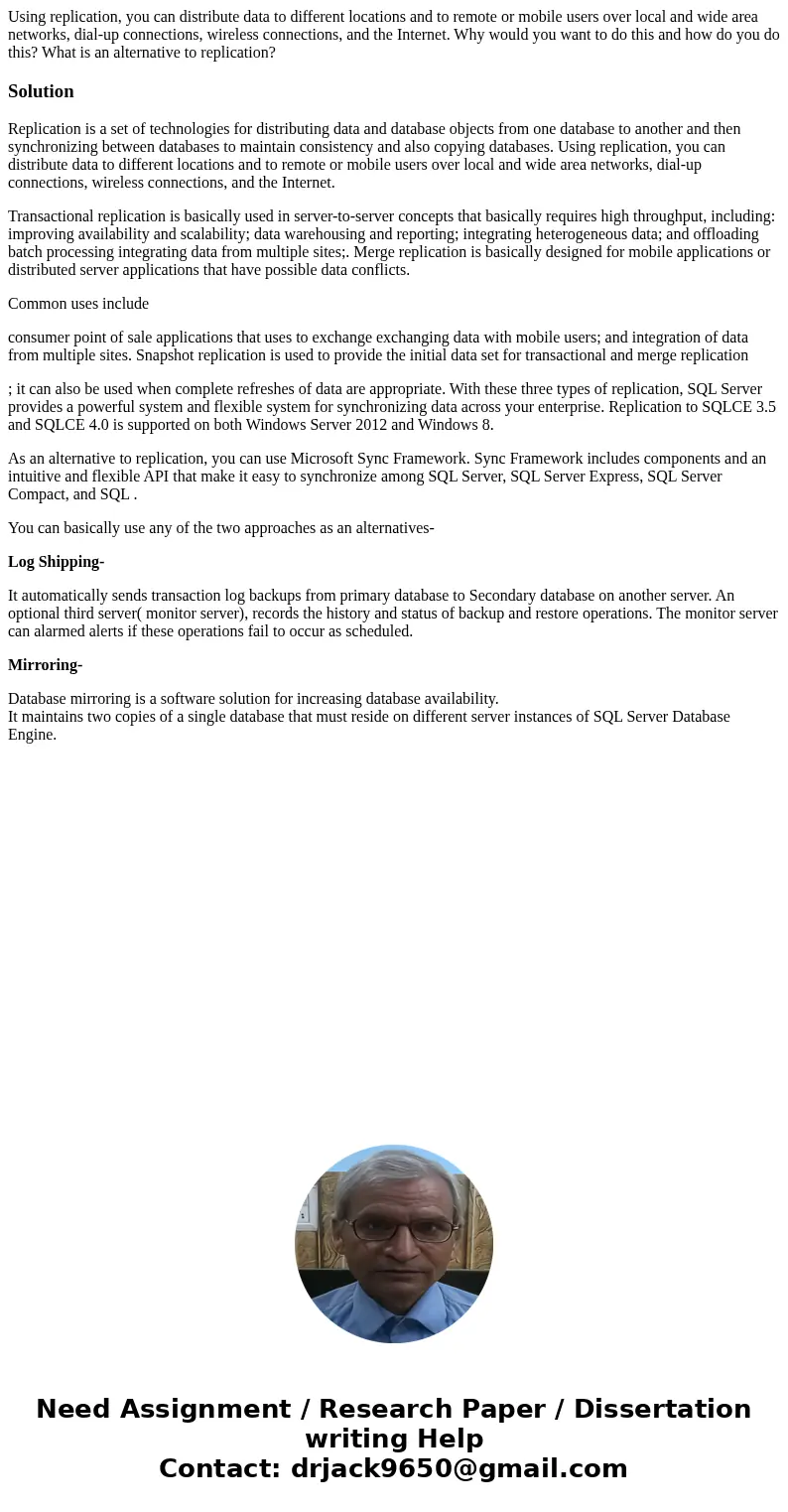Using replication you can distribute data to different locat
Using replication, you can distribute data to different locations and to remote or mobile users over local and wide area networks, dial-up connections, wireless connections, and the Internet. Why would you want to do this and how do you do this? What is an alternative to replication?
Solution
Replication is a set of technologies for distributing data and database objects from one database to another and then synchronizing between databases to maintain consistency and also copying databases. Using replication, you can distribute data to different locations and to remote or mobile users over local and wide area networks, dial-up connections, wireless connections, and the Internet.
Transactional replication is basically used in server-to-server concepts that basically requires high throughput, including: improving availability and scalability; data warehousing and reporting; integrating heterogeneous data; and offloading batch processing integrating data from multiple sites;. Merge replication is basically designed for mobile applications or distributed server applications that have possible data conflicts.
Common uses include
consumer point of sale applications that uses to exchange exchanging data with mobile users; and integration of data from multiple sites. Snapshot replication is used to provide the initial data set for transactional and merge replication
; it can also be used when complete refreshes of data are appropriate. With these three types of replication, SQL Server provides a powerful system and flexible system for synchronizing data across your enterprise. Replication to SQLCE 3.5 and SQLCE 4.0 is supported on both Windows Server 2012 and Windows 8.
As an alternative to replication, you can use Microsoft Sync Framework. Sync Framework includes components and an intuitive and flexible API that make it easy to synchronize among SQL Server, SQL Server Express, SQL Server Compact, and SQL .
You can basically use any of the two approaches as an alternatives-
Log Shipping-
It automatically sends transaction log backups from primary database to Secondary database on another server. An optional third server( monitor server), records the history and status of backup and restore operations. The monitor server can alarmed alerts if these operations fail to occur as scheduled.
Mirroring-
Database mirroring is a software solution for increasing database availability.
It maintains two copies of a single database that must reside on different server instances of SQL Server Database Engine.

 Homework Sourse
Homework Sourse